Elizabeth Kenkel has something she cherishes – communication independence – thanks to her speech-generating device, the Saltillo NOVA chat 10 using WordPower 80.
While she must rely on others daily for help with her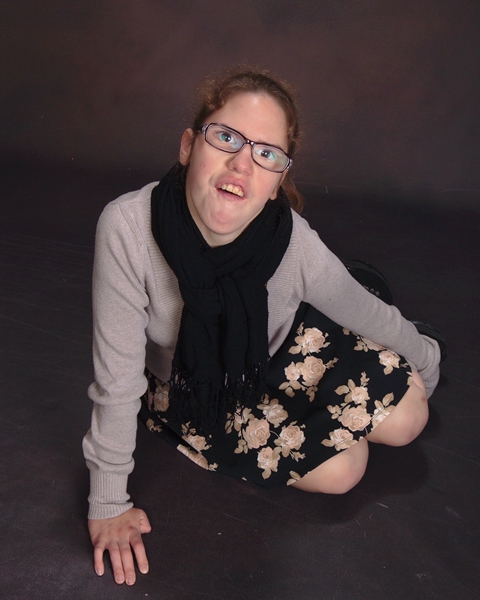 physical needs due to Moebius Syndrome and cerebral palsy, Elizabeth no longer has to rely on anyone to share her ideas, thoughts and feelings as long as her device is close at hand.
physical needs due to Moebius Syndrome and cerebral palsy, Elizabeth no longer has to rely on anyone to share her ideas, thoughts and feelings as long as her device is close at hand.
“Most people don’t understand sign language or my voice,” says the 21-year-old from Schaumburg, Illinois. “NOVA chat helps me say my feelings and open up my world. I am more independent with my NOVA chat. I can talk to more people without my sign language interpreter or my Mom. I can join in joking with my cousins.”
How Technology Enables Communication and Conversation
NOVA chat 10 is an augmentative and alternative communication (AAC) technology solution designed to help individuals with speech disabilities communicate with others.
The device’s mobility was key to Elizabeth’s interest, says her mother Sandra Kenkel. “Elizabeth has been given many opportunities through her school district to try different types of AAC approaches, including speech devices. But many devices are heavy and difficult to target, making them impractical for Elizabeth because she has difficulty controlling her gross and fine motor movements.
“She would use a device when forced to or when someone was around to set it up on a surface or hold it for her,” Sandra recalls. “As a result, she spent more time in the wheelchair at school because the staff was simply trying to encourage use of a communication device. That bothered her and made her very resistant to their use.”
Once Elizabeth discovered the NOVA chat, that resistance melted away. “We stumbled across it at an Abilities Expo we attended with the intention of looking at mobility solutions,” Sandra says. “Elizabeth stopped us at the booth to try out NOVA chat. It was lightweight, had a handle to hold, had a keyguard, and she could hear it! She didn’t want to leave – or return the device to the rep. We had to promise her we would look into getting her one.”
Elizabeth still prefers to sign or speak to her immediate family, her mother notes, “but she doesn’t want to leave the house without her NOVA chat. She carries it herself with the handle and strap for safety. She is mobile with it. She can easily set it on her knee for use. She programs it independently for new environments. And she doesn’t shy away from conversations with new people – she is proud to have a voice.”
An Active, Confident Young Adult, with Help from AAC
Elizabeth lives with her mother, father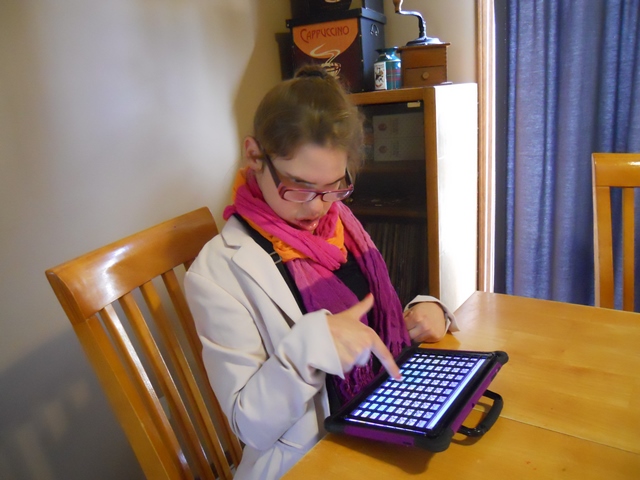 Mark, younger brother Michael, and younger sister Sarah. Four days a week, she takes a bus to and from an Adult Transition Program (ATP) at Hoffman Estates High School. Once a week, she volunteers at a resale shop alongside her mother. “Elizabeth sorts donations, helps create displays, and uses her NOVA chat to help research an item’s value for purposes of pricing,” Sandra explains. “She has established relationships there by using her NOVA chat at break time to chat with the other volunteers.”
Mark, younger brother Michael, and younger sister Sarah. Four days a week, she takes a bus to and from an Adult Transition Program (ATP) at Hoffman Estates High School. Once a week, she volunteers at a resale shop alongside her mother. “Elizabeth sorts donations, helps create displays, and uses her NOVA chat to help research an item’s value for purposes of pricing,” Sandra explains. “She has established relationships there by using her NOVA chat at break time to chat with the other volunteers.”
Having the NOVA chat enables Elizabeth “to feel more independent and confident,” her mother says. “People tend to underestimate her before they converse with her. People are less wary of her physical disabilities when they realize she is able to communicate her comfort level and needs.
“Having a voice has let her show people that she is intelligent,” Sandra observes. “Consequently, her self-esteem and quality of life improve as people stop avoiding contact or talking to her like a child.”
Like other young adults, Elizabeth enjoys music, watching YouTube videos, shopping, and going out to eat with her family. “She uses her NOVA chat to text, surf the web, read email, listen to music, and play games in much the same way her siblings do with their cell phones,” Sandra says. “She often Skypes with her brother, who is off at college, or her friend.”
Teaching Technology and Inspiring Others
Elizabeth says she was especially proud to win a Technology Award in high school “since I was afraid to depend on technology when I was younger. But in high school, I learned to use the NOVA chat and it really worked.” Now she enjoys teaching others how to use computers “and how to talk with them. I tell others, ‘don’t give up. You can do it. Keep practicing and you will get better.’”
Sandra is grateful that the NOVA chat has helped her daughter find “the courage and the vocabulary to advocate for herself. She is much more articulate with the typed word than she is with sign language. The NOVA chat turns those thoughts into speech. She is better able to express her dreams and fears.”
The device has also reduced frustration across the Kenkel household. “Elizabeth is especially difficult to understand if she is upset, and she is especially upset when no one understands,” Sandra explains. “The NOVA chat breaks that cycle. Elizabeth is now less frustrated because she can express her feelings and her wants more specifically; there is less guessing. Stress is lower for everyone because Elizabeth has less anxiety.”
As her daughter’s “chief interpreter,” Sandra also has more freedom to leave Elizabeth's side thanks to the NOVA chat. “She can form relationships independent of me because she can talk to people without an interpreter. She can independently make requests, check in at the doctor’s office, join in good-natured banter with her cousins. She can articulate thoughtful responses to others. She is also able to spontaneously express her humor and personality at unexpected times.”
At the close of each day, Sandra gladly assists Elizabeth with one last crucial task: “She does not have the dexterity for chargers, so I charge her NOVA chat and wheelchair every night.” In the future, Sandra says, “We hope to travel and seek out new adventures together.” Elizabeth wholeheartedly agrees: “I want to travel with my Mom, like a lot.”
A Mother’s Tips for Supporting a Child’s Success with AAC
Sandra Kenkel shares the following tips for other parents of children using AAC:
- Don’t underestimate! Set the bar high and
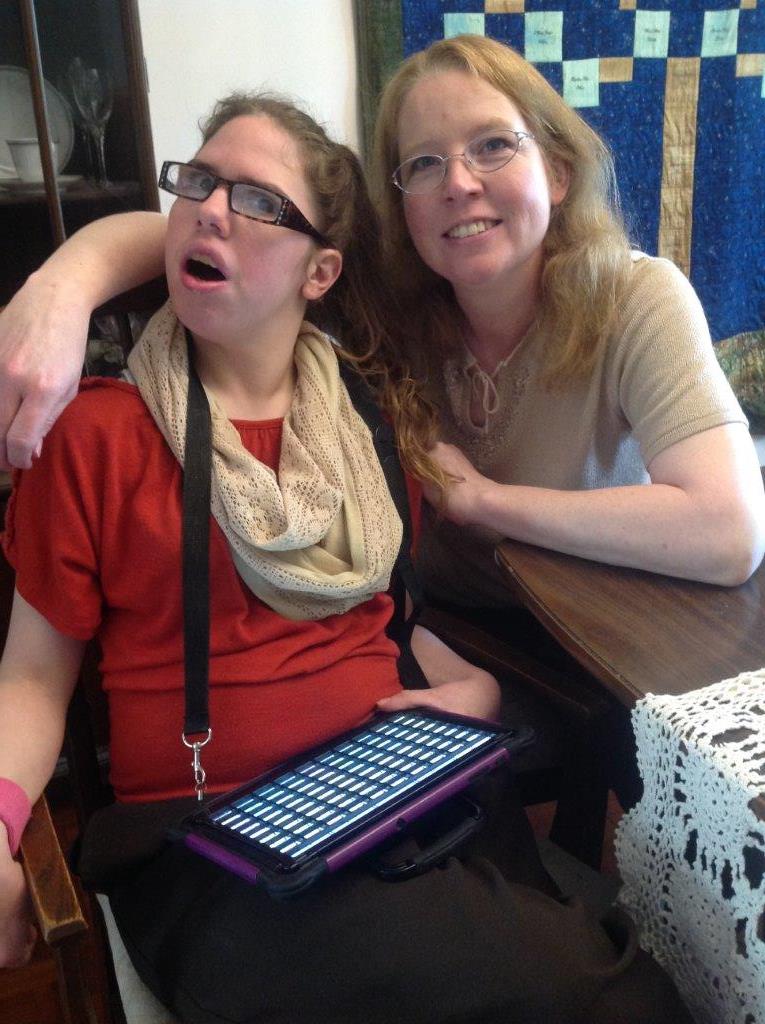 then celebrate any progress toward it. Kids in general tend to rise to expectations. Special kids are no different. Doctors don’t have a crystal ball -- we ignored the ones who told us “she will never” and felt justified when “she did!”
then celebrate any progress toward it. Kids in general tend to rise to expectations. Special kids are no different. Doctors don’t have a crystal ball -- we ignored the ones who told us “she will never” and felt justified when “she did!” - Kids are always listening. Remember that kids are listening even when they are not talking. They DO KNOW your secrets and sometimes stress over them. Don’t talk in front of your silent five-year-old about things you wouldn’t discuss in front of a chatty five-year-old. Years later, we learned that Elizabeth worried unnecessarily about things that she was too young to understand and didn’t have enough language to ask about.
- Keep talking. When Elizabeth was a baby, her neurologist told me to “Describe the world to her -- she is listening.” I’d sit her in the dirt and talk about the dirt, help her pull cupboard doors open to play with the Tupperware. In the car, I’d talk about what we saw. We have to remember we are modeling a speech pattern that we hope they will imitate.
- Jump on your child’s bandwagon! Elizabeth had so many things to work on – OT, PT, speech, feeding, drooling, walking, crawling, math, money, reading. It’s overwhelming, but at different points in her life, different things were more important to her. When she was determined to walk, we directed our attention to supporting PT and practicing with her. That meant that other goals fell by the wayside, but only temporarily. She made so much more progress in the area because it was HER goal; we knew we could always come back to working on strengthening her arms later.
- Do WITH them, not FOR or TO them. Elizabeth always wanted to be like everyone else. She fought technology when she was the only one using it. She didn’t open up to it until we “stole” Dad’s laptop. I increased his font size on the screen. She liked that, because she was using a “normal” computer, not a “special” computer. But the mouse was frustrating her. I asked her permission to try the joystick mouse. That was great! She could do the keys, but it was awkward. I asked if the Intellikeys would make it easier -- we added that piece in. By the end of the experiment, the laptop was only serving as a monitor, but she was accepting it because in her mind it was still Dad’s laptop, a computer like everyone else’s. She had time to try out “normal” and request the accommodation. Then we transitioned to the systems designed for people with her abilities and she saw them in a whole new light.











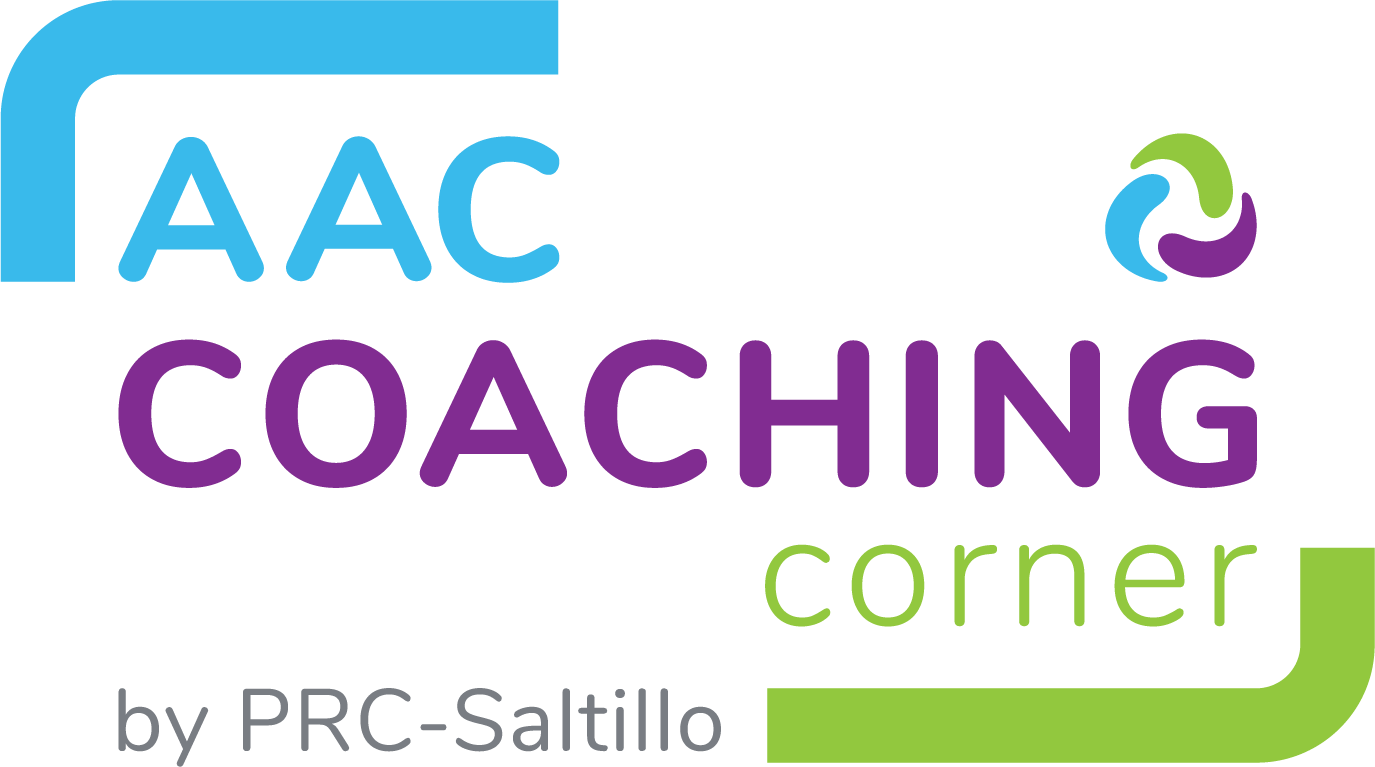


 and how finding the correct communication device, suitable to my abilities, has helped me regain my independence. When I was 16-years-old I suffered a Traumatic Brain Injury (TBI) from an assault, which damaged my motor skills, and left me with limited mobility. When I first awoke in the hospital unable to speak but completely aware of my situation, the doctors asked me to blink my eyes to yes/no questions, which assessed my cognition. I’m 32-years-old now and I still use eye blinks as a quick response method to yes or no questions. However, this method did not allow for personal opinion.
and how finding the correct communication device, suitable to my abilities, has helped me regain my independence. When I was 16-years-old I suffered a Traumatic Brain Injury (TBI) from an assault, which damaged my motor skills, and left me with limited mobility. When I first awoke in the hospital unable to speak but completely aware of my situation, the doctors asked me to blink my eyes to yes/no questions, which assessed my cognition. I’m 32-years-old now and I still use eye blinks as a quick response method to yes or no questions. However, this method did not allow for personal opinion.